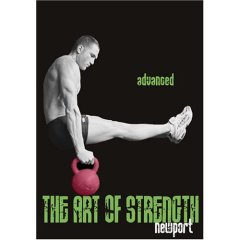With your hand opposite the low pulley, grab the low pulley by the handle with your body frontal plane parallel to the actual pulley plane.
Press up cable handle over your head.
Slightly flex your elbow joint.
Retract scapula and direct reaction force tension into your core and the scapulothoracic joint, not the glenohumeral joint.
Place your free hand on the hip at the same side of the pulley or put the free hand on your sacrum or low back region with you elbow flexed.
Descend by squatting with knee flexion, hip flexion and anterior pelvic tilt.
While descending, laterally flex trunk toward the low pulley side.
Descend as far as you can maintain an anterior pelvic tilt and as long as there is no strain on the knees.
Rise from the squat position by extending knees and hips, moving into a neutral and almost posterior pelvic tilt while bringing the laterally-flexed trunk back to a neutral trunk position in the sagittal plane. A lot of driving motor force comes from the oblique abdominal muscles and the gluteal muscles. The arm with hand grip on the pulley handle remains overhead.
Repeat repetitions.
There are similar exercises recommended with the use of a kettlebell. A progression of this exercise could be using a kettlebell for advanced joint stability, especially at the glenohumeral joint. However, the pulley version offers a better vector for activation of oblique abdominal muscles and less downward compression (and associated risk of injury) on the shoulder joint or spinal column if proper technique is not performed.
For more advanced progressions, see Art of Strength by Anthony Diluglio at artofstrength.com
— some exercises are more advanced and involve technique that is difficult to learn without one-to-one instruction. Some exercises involve deep knee flexion and extreme range of motion action at the glenohumeral joint and may have higher risk of musculoskeletal injuries associated with their performance. In other words, Anthony DiLuglio is an excellent instructor, but some exercises are more advanced and therefore involve greater risk of injury —especially if not performed properly.

